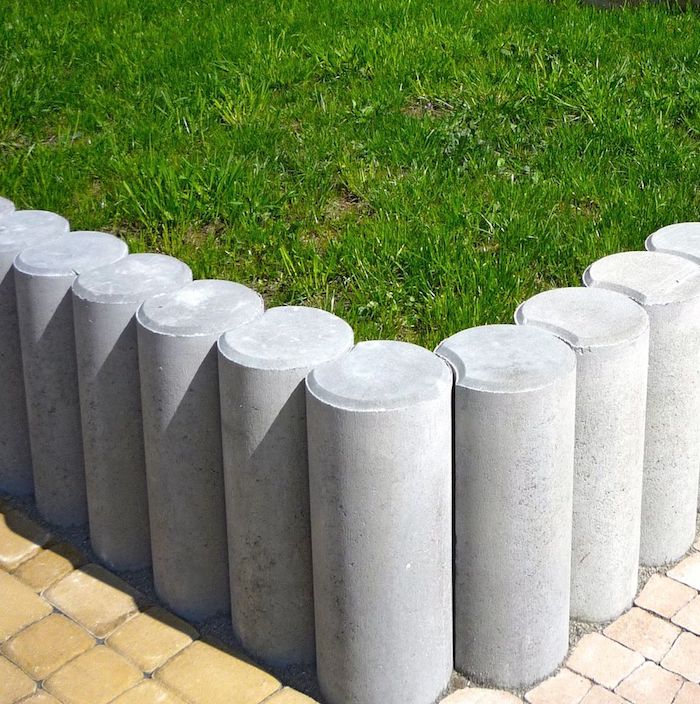Retaining walls are designed to laterally support soil that would otherwise drift down. They are built to withstand thousands of kilos of pressure, however, there may be times where your retaining wall structure may fail. Retaining wall failure occurs when a wall is unable to withstand this pressure of the soil that it’s supporting, resulting in considerable damage to your property. It is possible to prevent retaining wall failure at the time of construction with correct design calculations and proper installation that ensures stability. Our contractors have outlined all the signs of retaining wall failure, how they happen and what to do to prevent them.
Early Signs of Retaining Wall Failure
Bowing or cracking
The common signs for retaining wall failure are often cracking, tilting, bulging, bowing or buckling. Fractures in the wall can often prevent the structure from retaining the soil. At this point, the wall may be retrofitted with reinforcements like anchor bolts to rectify bowing before a total collapse.
No water from weep holes after rain
Weep holes provide a small opening to allow proper retaining wall drainage. No water flowing through weep holes after rain is a very concerning sign as it indicates poor drainage conditions. This can be due to congested weep holes, a lack of draining aggregate or soil that isn’t properly graded away from the wall.
Subsidence in surrounding areas
Subsidence (sudden sinking) of the soil in surrounding areas can be an indication that the pressure on your retaining wall is changing. Precise calculations are used to gauge the forces acting against the wall before its construction, thus changes could result in eventual failure.
Causes of Retaining Wall Failure
There are many causes of a failing retaining wall:
Saturation of backfill: Saturation of the soil behind the wall without adequate drainage significantly increases pressure on the wall leading to failure.
Unexpected load: A new building or an extension can be constructed close by to a retaining wall without considering the increase of load.
Incorrect design calculation: A significant amount of engineering is required to ensure that a retaining wall will be able to withstand its load. Incorrect calculations will inevitably lead to a retaining wall failure and collapse.
Cheap materials: Cutting corners when selecting retaining wall materials can result in drastically decreased load-bearing capacity.
Improper Installation: There are several different types of retaining walls, each with their own purpose. Poorly installed walls will be susceptible to failure, especially when exposed to extreme weather.
Lack of site investigation: Soil compression, backfill materials, water tables, landslides and building codes restricting soil bearing capacity should all be thoroughly investigated to reduce the probability of retaining wall failure.
Age of the retaining wall: Aside from external causes, even the best quality walls won’t last forever. Timber retaining walls typically last around 20 years, whereas masonry and concrete can last anywhere from 50-100 years. If there are no early signs of failure after 50 years, it’s an indication that the wall will likely last for at least another 50 until it deteriorates.
Preventing Retaining Wall Failure
Adequate drainage
Soil saturation is the most common external factor that causes retaining wall failure, but there are many ways to prevent it. Compacted soil, a quality backfill aggregate, geogrids, weep holes, agricultural pipes and soil grading are all commonly used design features to stop water accumulating and causing retaining wall failure.
Consulting experts about additional loads
When planning an extension, resurfacing or building something new near a retaining wall, it’s important to consult an expert to ensure that the new load won’t add unanticipated pressure. Scaled retaining walls built too close together can also lead to retaining wall failure.
Conservative calculations
When surveying a site for a retaining wall, all calculations should be conservative and detailed for the best possible construction. Investigating the site, understanding the construction codes and taking precise measurements is essential to ensure your retaining wall lasts for many years.
Quality materials
The type of material used for retaining walls can depend largely on its purpose and the aesthetic the designer is hoping to achieve. Our contractors have outlined the benefits of using stone and blockwork for your retaining walls.
Expert contractors
Hiring contractors that are experts in the field ensures that you can achieve a retaining wall design that is both functional and looks great on site. Our services look to provide the best possible value to clients with thorough installation to create the best possible retaining wall for you.
Contact Solutions Built to Build Your Commercial or Residential Retaining Wall
If you are after more tips on retaining walls or you would like to know more about preventing retaining wall failure, please get in touch with our team. If you are ready to have our team construct a new retaining wall for your property, fill out our contact form on our website, or you can contact us by phone or email.
